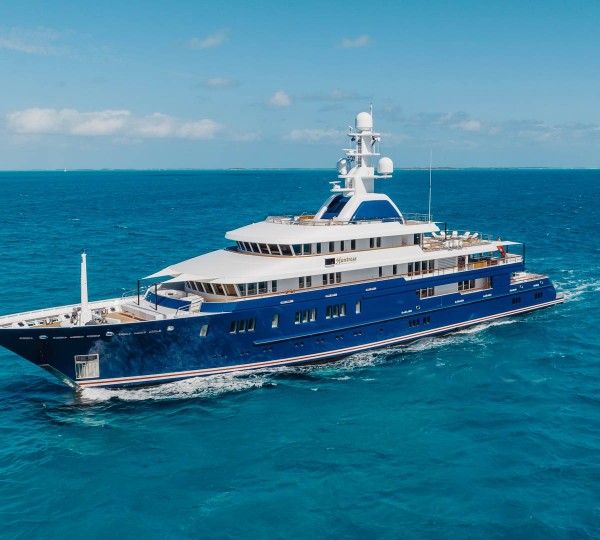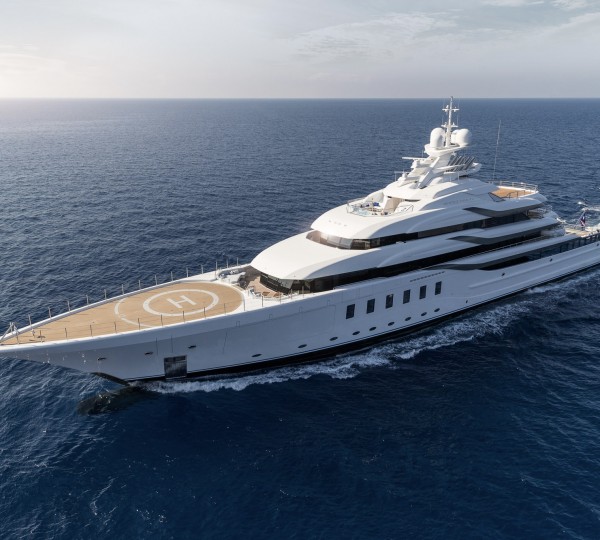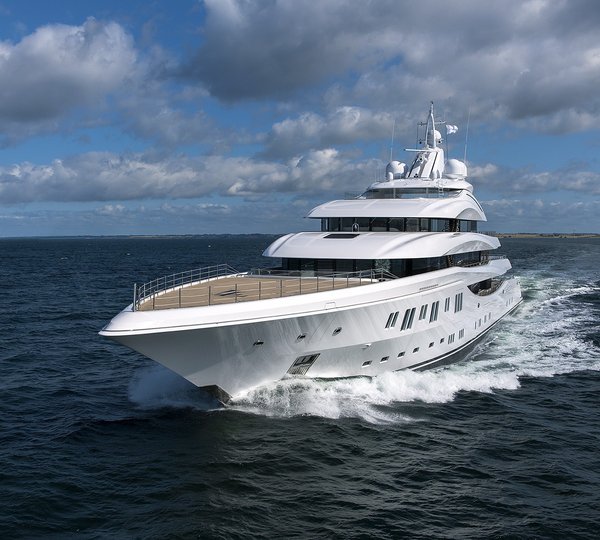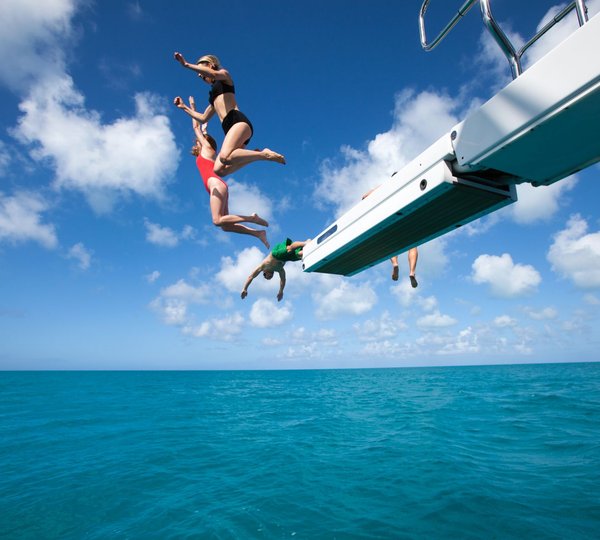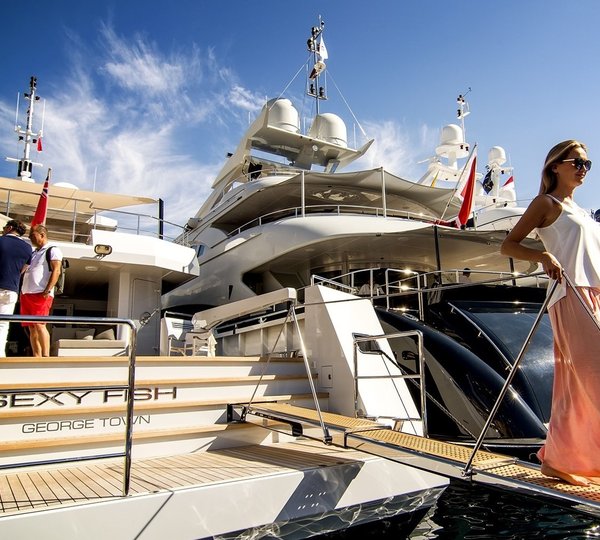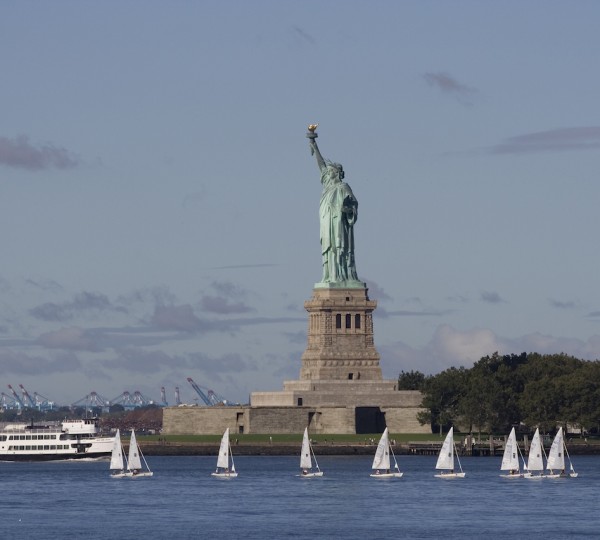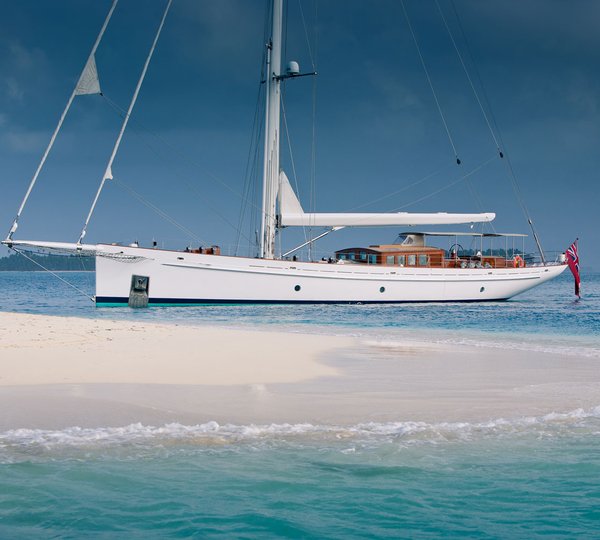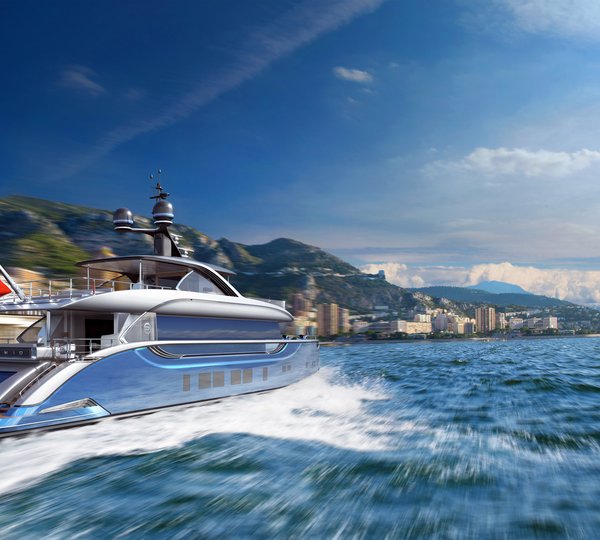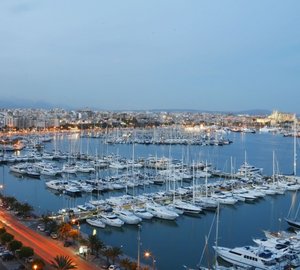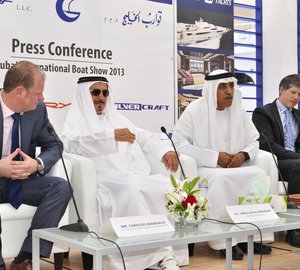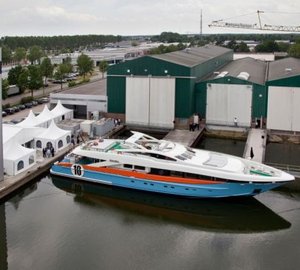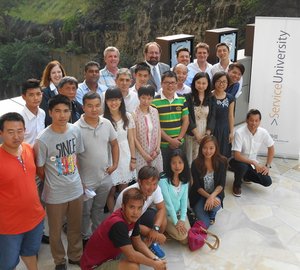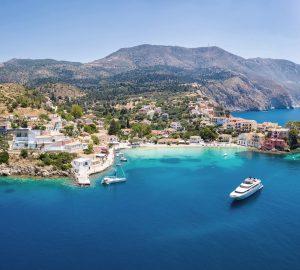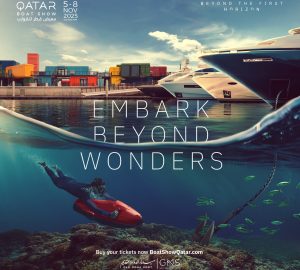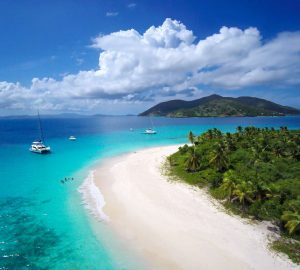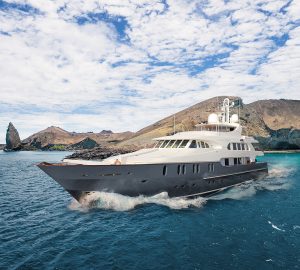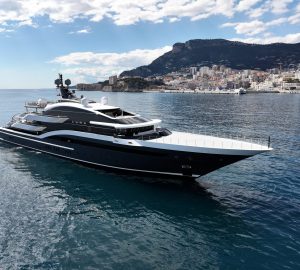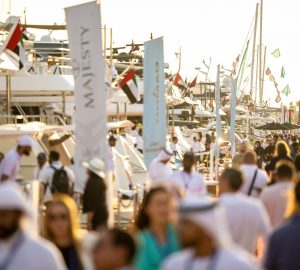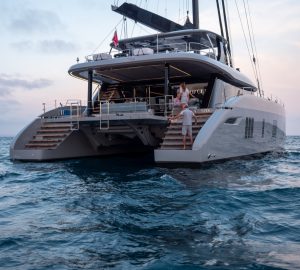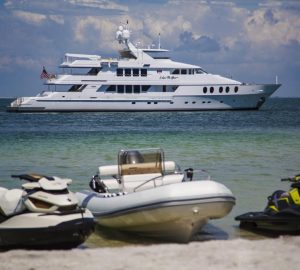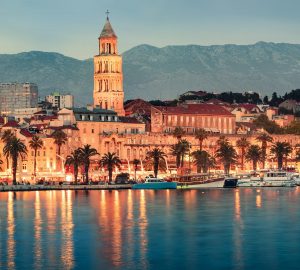Major players in the Superyacht Arena met in Amsterdam for three days of intense debate, powerful networking and business development at the industry’s largest and most valuable conference event, the Global Superyacht Forum.
All of the major players from Lurssen, Feadship, Burgess, Heesen, Amels, Espen Oeino Design, Redman Whiteley Dixon, Royal Huisman, Abeking & Rasmussen, Benetti, Moomussennen, YCO, Edmiston, YPI, Dohle, Rybovich, CMN, Thyssen Krupp, Camper & Nicholsons, Hill Robinson and Watkins will be in attendance representing hundreds of yachts, new build and existing, not to mention the Captains and Owners representatives from several major new builds.
Global Superyacht Forum 2010: Day One –
Once again leading industry figures have gathered in Amsterdam for the Global Superyacht Forum (GSF), hosted by SuperyachtEvents – a division of The Yacht Report Group. 400 delegates will attend over the course of three days to digest the most important issues facing the market right now, led by a group of dynamic speakers.
Day One of GSF opened with Keynote session 1, led by Richard Beattie owner of the 45m superyacht Big Fish, delivered this year for Aquos Yachts by McMullen & Wing. Joining him on stage were Jim Gilbert of Aquos Yachts and Chairman Martin Redmayne. Beattie welcomed the delegates into his world, proclaiming his passion for both motor yacht Big Fish and Aquos Yachts – describing the business model as ‘new yachts for a new age.’ Having chartered and owned yachts before, Beattie described Big Fish as a revelation in terms of what could be experienced on board a superyacht. There is a new generation of potential owners who should be being marketed to and attracted to the market. Beattie stressed the importance of enticing new owners through charter, expressing his belief that if many of those able to afford yachts were just made aware of ‘wow factor’ of the experience on offer, they would be easily converted to the idea of ownership. Getting these potential new clients to undertake their first charter is key to the future of the industry. MotoryachtBig Fish will be followed by the 50m expedition yacht Star Fish in 2012.
The second session of the day, Paper 2 – State of the World’s Wealth vs. the State of the Superyacht Industry, featured a panel of Michael Breman, President of SYBAss, Tine A. Willumsen of Above & Beyond, and Milton Pedraza, President of the Luxury Society in New York. Having just heard from Richard Beattie, a hugely positive owner enthusing about the industry, the second session examined ways in which the industry could broaden its horizons to market itself widely and in new ways. The two external High Net Worth specialists, Pedraza and Willumsen, provided expertise on related luxury markets and a wave of enthusiasm for the potential of the superyacht market. Their overwhelming message was to rethink the way we communicate with the emerging new buyers from the BRIC economies, all of who have seen treble digit growth in their wealth since 2009. Breman reminded the audience not to overstate the market, urging “cautious optimism”. As the pre-recession orders deliver there is a need to replace at least a percentage of these orders in order to sustain the market.
‘There is a difference between worth and value: a yacht is worth what someone will pay for it.’ The final session, Valuations vs. Realistic Prices attempted to take the definition of value beyond that pragmatic statement. Over the course of the session delegates learnt of different ways of looking at valuation. From the discussion undertaken it was clear that valuation has a different meaning for different areas of the industry; for example shipyards, brokers, surveyors, insurers. The fundamental applies that it’s ‘worth’, if not it’s value, is indeed what someone will pay for it. The key question raised during the session was would a valuation model work to give new clients and existing clients more confidence in the markets stability. The audience felt that it would make sense but with sio many variables the hedonic regression model that was presented is just a starting point. Perhaps it is too premature, however there is no reason in the next few years that some clever individual may not come forward and develop it. This concept will be further investigated by the Superyacht Intelligence team using commercial shipping, aviation and real estate models. Global Superyacht Forum 2010
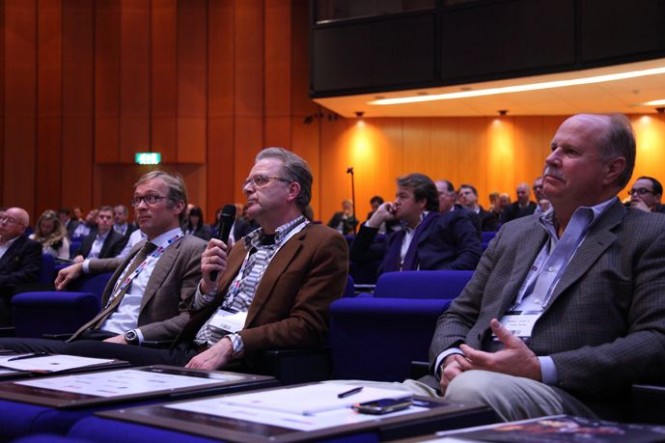
Global Superyacht Forum 2010 L to R Bas Nederpelt and Henk de Vries III of Feadship Van Lent, and Billy Smith III of Trinity Yachts
Day One of the Global Superyacht Forum was concluded by a Welcome Drinks session, allowing attending delegates to network and relax after a fascinating days insight into the key issues facing the industry. The overwhelming message of the day was one of positive energy mixed with cautious optimism. The need to attract new blood to the market is paramount and we need to work together and think broadly to achieve this.
Global Superyacht Forum: Day Two –
Day Two of Global Superyacht Forum opened with one of the most worrying issues facing the industry today: the ILO MLC 2006. Paper 4 – International Labour Organisations Maritime Convention 2006 featured a panel of Captain Rodney Hatch, motor yacht Turquoise; Chris van Hooren, Technical and Environmental Director of SYBAss (Superyacht Builders Association); Peter Southgate, Advisor – Maritime Policy & Legislation Development and Shipping Master of the Cayman Registry; Paul Coley, Assistant Director of Seafarers and Ships – Maritime and Coastguard Agency; and Andrew Schofield, PYA and Master of M/Y White Rose of Drachs.
Coley was able to finally reveal the finished proposal to make MLC 2006 yacht friendly. As was widely expected the route of substantial equivalence has been taken; an approach echoing that which brought LY1 and 2 into being. While still needing some evolution is was clear from van Hooren’s presentation that the proposal was going a long way towards answering the needs of the industry. MLC 2006 had the potential to be extremely damaging to the industry so it was very encouraging to see that this was finally not to be the case. Southgate diverged from the main concern of accommodation size and gave a broad overview of the social, or ‘soft’, aspect of MLC 2006. While most of these aspects are currently in law he explained that by bringing them into one single convention and making the enforcement more robust it would offer real protection to seafarers. Clearly this is a timely move as Southgate told attendees that he had received at least two complaints from seafarers each month this year, the majority of whom were working on yachts.
Paper 5 – Technical Presentation – Yacht’s Lifecycle Management was led by a panel of Arjan Kleinveld, Managing Director of Van Berge Henegouwen, and Dennis Mol, Business Director of Yachts at Imtech. During the session Kleinveld and Mol explained and contrasted CAPEX and OPEX (respectively capital and operational expenditure for superyachts). With specific reference to the AV systems on board two experts detailed how effective control of these two fiscal aspects of yacht operation can not only control and reduce expenditure but also raise efficiency levels and ensure greater owner satisfaction.
After a busy networking lunch came Paper 6 – Project Management – An Insight into the commercial shipping industry, presented by Thomas Eefsen, Sales and Marketing Manager at Maersk Maritime Technology. Eefsen gave an extensive and detailed presentation on how his business unit of Maersk worked through-build as, what would be dubbed an owners representative in our industry. The procedure was similar in broad view to ours but in interesting detail there were variations from which important lessons can be gained for superyacht construction. What this type of approach can bring was well illustrated by a recent client of Maersk’s division, Svitzer. Captain Grant Thompson of M/Y Kogo described for delegates the advantages that Svitzer’s approach brought during a recent Lloyd’s five year survey. Svitzer, rather than simply implement manufacturers recommended procedures, actually analysed the condition and usage of the machinery. They then proposed the recommended procedures to class and implemented them, bringing significant savings, the degree of which were clearly extensive, though exact figures could not be revealed to the audience.
The final session of the day was Paper 7 – 13-36 Passenger Code – What it all means? The panel leading the session was made up of Peter Southgate, Cayman Registry; Simon Milne, Manager, Vessel Policy Branch, Maritime Coastguard Agency; Richie Blake, Principal Surveyor, Cayman Registry; Paul Coley, Assistant Director of Seafarers and Ships, Maritime and Coastguard Agency; and Angus Lamming, Senior Surveyor, Isle of Man Ship Registry.
Here, some two years on from it’s first presentation at GSF, the widely anticipated passenger yacht code (PYC), also known as 13-36, was presented in its final form for the first time by Peter Southgate. This code is the result of two and half years work by REG (Red Ensign Group). The Cayman Island Shipping Registry (CISR) took the lead in terms of writing the code, however the input from all the members of REG was clear, especially through the additional presentations of Milne, Blake, Coley and Lamming. Southgate informed delegates that the Category 2 registries had given useful input to the code. Significantly, too, attendees learned that during the consultation procedure 40 per cent of industry comments were incorporated into the code. It was also explained that this is not a code connected to LY2, nor an enhancement thereof, but a standalone code and indeed one that is aimed at a relatively strong niche in the industry. Though nominally it could be applied to any vessel over 24m, realistically it’s much more suitable for the very much larger yacht. Equally, though it could be applied in refit, the depth of requirement is such that only the most full conversions would be likely to be able to comply. Though niche, we learned that there are currently eleven vessels in build and three in the design phase, flagging into Cayman that were applying the code already; all over 90metres!
Day Two was closed by the Global Superyacht Forum dinner, hosted for a second year at Jamie Oliver’s Fifteen restaurant. A walking dinner, in fantastic surroundings, provided yet another ideal opportunity for delegates to network and discuss the key points made during the day’s debate.
Global Superyacht Forum 2010: Day Three –
The final day of Global Superyacht Forum 2010 opened with Paper 8 – VAT & Harmonisation – is it even possible? Co-chairing the debate was John Leonida of Clyde & Co, with a panel of Carlo Galli – Clifford Chance; James Lawson – Hill Dickinson and Lorenzo Pollicardo – Federeganti Yacht. The general answer to whether VAT and harmonisation is possible was that it currently wasn’t although someday it may be more so. The panel illustrated the problems faced, referring to such examples as the seizure of motor yacht Force Blue. Generally, however, the consensus was that provided the rules are actually followed the French Commercial Exemption (FCE) law is still useful and applicable for superyachts with a genuine charter programme. One strategy adopted by some owners for peace of mind is to pay the VAT regardless of whether they may be able to avoid its payment. Various leasing schemes were also discussed which currently are fully functional within the EU though some members of the panel clearly felt that those that involved paying very minimal VAT may well potentially have a short shelf life.
The second session of the day was Paper 9 – Technical paper – The Truth Behind Satellite Communications. On the panel were Barbara Bersani – Marlink; Kartik Sinha – Inmarsat and Derik Wagner – MTN Satellite Communications. For this paper the panelists outlined the differences in service providers amongst Tier 1 and Virtual service providers. The focus was on examining what owners want, what they actually need, and what they get on their yachts.
Following the final networking lunch came the much-anticipated Paper 10 – Owners investing in the industry. Co-Chaired by Paul Miller – Underwriting Risk Services Ltd – the Paper was presented by Salim Erdem – Merit Gemicilik A S / Moonen and Sean Ewing of Pinmar. As well as being a superyacht owner, with another under construction, Erdem acquired the majority shares in Moonen Shipyards in 2009. Ewing too has invested in the industry by purchasing the majority share in Pinmar, which was previously held by the Ferretti Group, and is now Pinmar’s Chairman. Erdem’s and Ewing’s views on the industry were highly personal, diverse, interesting and contradtiong. Erdem clearly saw yachting as an emotional and artistic venture and even went so far as to say that he didn’t feel a yard should necessarily make a profit. Ewing, whose background is in financial services and the investment sector, took a much more numbers and business practice related view. Both offered delegates serious insight into the mind of the yacht owner and the HNWI and Ewing in particular provided a ‘to do’ or wish list for the industry, that has in recent times been hampered by crisis, to improve its performance. In the subsequent coffee break it was clear that this was one of the most, if not the most, popular session of the entire event.
After the inspiring presentation by Erdem and Ewing came the final two papers which focused on the always topical subject of paint. First was Paper 11 – Technical paper – Coatings I with a panel of Alessandro Gallifuoco – Benetti; Ken Hickling – Awlgrip and Tom de Vries – The De Vries Group. The panel, made up of members of the SYBAss coatings working group, brought the latest thinking in coatings standards to the stage. Although the ISO standards have not been finalised as yet delegates were told that that they are coming soon, perhaps as early as next year. It was also learned that the ISO standards are not absolute but rather act as a framework for assessing the coating. This means that absolute values are not incorporated simply to standardise and define how the measurements must be taken and which measurements must be taken.
The final debate of GSF 2010 was Paper 12 – Technical paper – Coatings II with a panel of Dr. Benigna v. Brederlow – Wrede Consulting; Remy Millott – Pinmar and Kay Wrede – Wrede Consulting. Continuing with the theme of standards Millot and his co-presenters explained Pinmars new definitive painting standard. This standard contains a number of measurements to be made and a regime for making them. But in contrast to the previous paper the standard does provide absolute values, or in fact a range of values. Millot commented that these are not easy to achieve but believes that Pinmar can in fact achieve them consistently. By implication these absolutes should also be achievable by any other applicator of equivalent quality. The standards and the numbers are open and available to all within the industry and were developed in consultation with manufacturers and paint consultants. Wrede Consultancy collaborated with Pinmar, aiding them with the scientific aspects of developing the standard. Delegates were surprised to learn that all the effort that they had put in was gratis, similar to Pinmar’s making the standard open and available to the industry.
With the debate complete the 2010 Global Superyacht Forum closed with the Global Superyacht Party, the theme of which was ‘Shore Leave’. If the whole three day event could be summarised in one feeling it was that the industry needs to look at wider thinking, drawing on the expertise and experience of related luxury industries. Drawing new blood into the industry is key and thinking outside of the box outside of that box may be the key route to doing so.
Thanks must go to all speakers, delegates and the sponsors – Awlgrip, Cayman Registry, Clyde & Co, Current Corporation, Inmarsat, Intelisea, Lutron, MAST, MedAire, Pantaenius, Pendennis, Rybovich and Wartsila – for making the event possible.
Anyone interested in registering for Global Superyacht Forum 2011 or any other events organised by the SuperyachtEvents team should contact Andy Howell – andy@theyachtreport.com – or visit SuperyachtEvents.com
Transcripts will be available to attending delegates and subscribers to the Business and Executive packages over the coming weeks at SuperyachtEvents.com

















